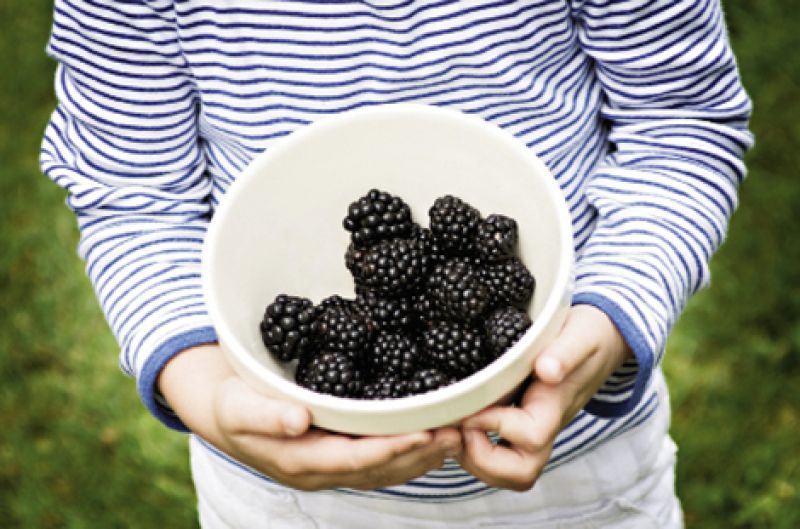
Height: 4-6' (Pinch back when desired height is reached.)
Blooms: White to pale pink
Foliage: Green
Classification: Perennial roots, biennial canes
Soil preference: Easily draining soil
pH: 5.5-7
Silhouettes: Climbing/free-standing or trailing
Plant: Climbing/free-standing 2-3' apart; trailing 5-10' apart
Water: Keep soil moist
Sunlight: Full sun
Is there a better symbol of the slow, Southern life than plump, juicy blackberries? After all, who in the urban jungle can grow sprawling bushes that spawn terrific honey; bloom year-round (depending on the variety); offer top-notch antioxidants, fiber, Omega-3s, and protein; and make you a champion homemade gift-giver with all the jams, jellies, preserves, and desserts you’ll churn out? Plus, “growing these bushes is rather easy,” says master gardener Darren Sheriff of North Charleston. He works with the Lowcountry Nursery and has grown a host of brambles (blackberries, boysenberries, and raspberries) in his own backyard. “These plants, like most anything else in the garden, just require a little TLC.”
Helpful Hints
Plant bushes in the spring or after the first frost in the fall. Position against a trellis, but steer clear of eggplant, pepper, potato, strawberry, or tomato plants, or anywhere these plants have recently grown as pests that trouble them favor blackberries, too. Also, know that buried trailing canes—or stalks—can propagate new plants.
Harvest fruit as soon as it’s ripe, or cover plants with netting to ensure birds don’t feast on the fruits of your labor. Not all varieties will bloom or fruit in their first year, as that’s when the canes grow. After they’ve died off for the winter, cut back and expect a second-
year harvest.
Prune back to about six to 12 inches after the plants have settled into the ground. Tie back plants if the fruit threatens to topple canes. Remove spent canes after they’ve fully fruited and prune out any other dead or diseased canes to maintain ample airflow and compost elsewhere to avoid illness in healthy blackberry plants.
Growing Blackberry Bushes in Containers:
According to Darren, these plants thrive in well-draining pots that sprout tripod-like trellises. Water about one inch per week during their growing and fruiting time, and fertilize with 10-10-10 tomato Miracle-Gro. For more on Darren’s horticultural adventures, visit his blog at www.thecitrusguy.blogspot.com.